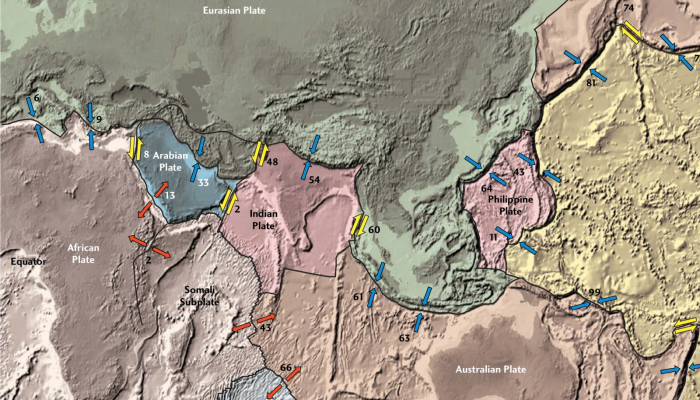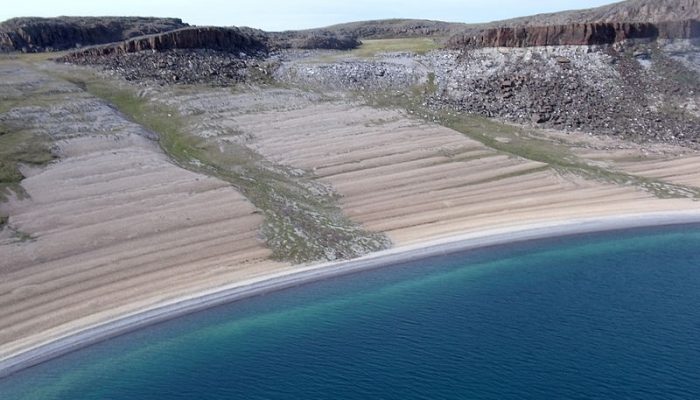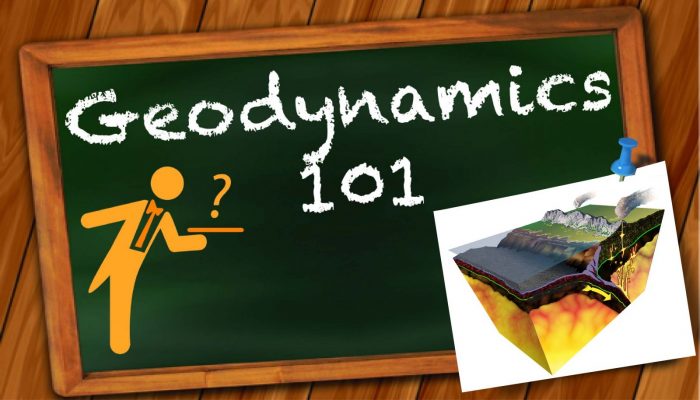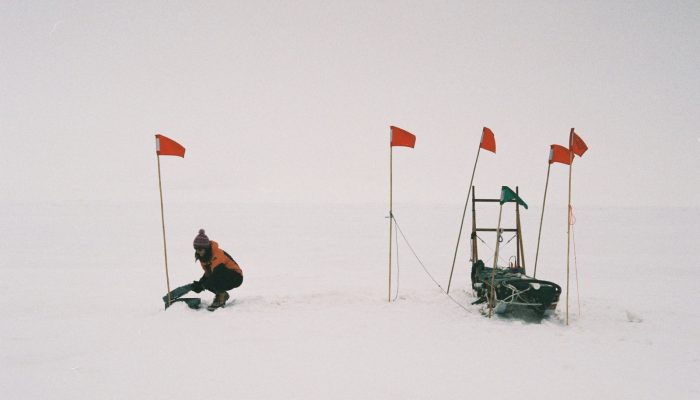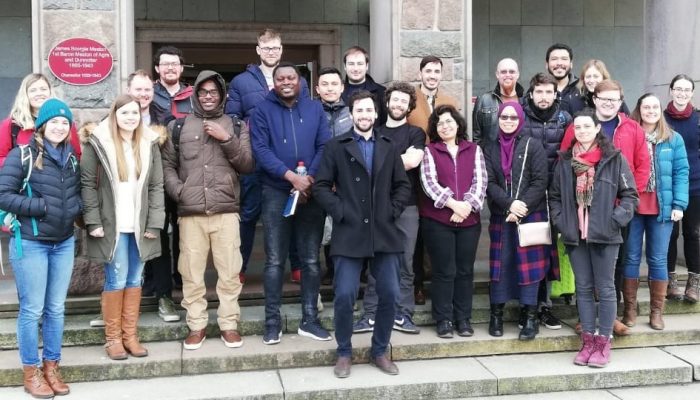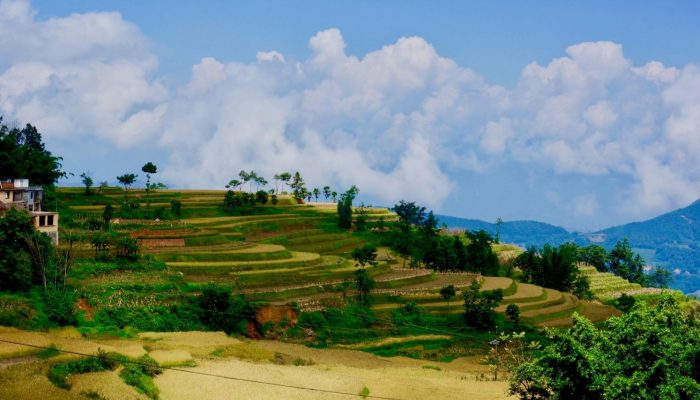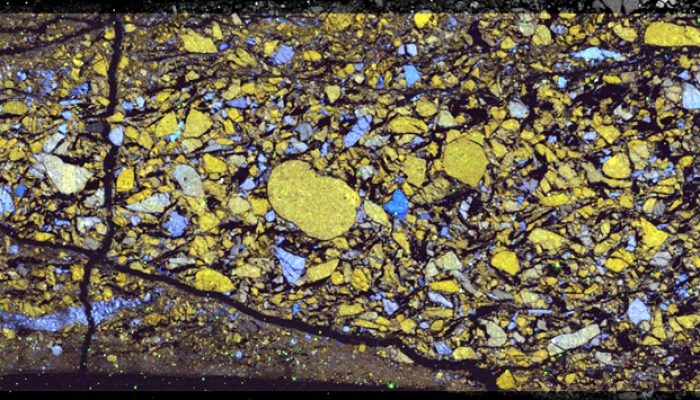These blogposts present interviews with outstanding scientists that bloomed and shape the theory that revolutionised Earth Sciences — Plate Tectonics. Get to know them, learn from their experience, discover the pieces of advice they share and find out where the newest challenges lie! Meeting Cesar Ranero Prof. Cesar Ranero is an Earth Science researcher, currently Head of Barcelona Center for Subs ...[Read More]
Cryospheric Sciences
Image of the Week – The solid Earth: softer than you might think!
Global sea level is rising and will continue to do so over the next century, as has once again been shown in the recent IPCC special report on 1.5°C. But did you know that, in some places of our planet, local sea level is actually falling, and this due to rising of the continent itself?! Where is this happening? In places where huge ice sheets used to cover the land surface during the last ...[Read More]
Geodynamics
How to make a subduction zone on Earth
Subduction zones are ubiquitous features on Earth, and an integral part of plate tectonics. They are known to have a very important role in modulating climate on Earth, and are believed to have played an essential part in making the Earth’s surface habitable, a role that extends to present-day. This week, Antoniette Greta Grima writes about the ongoing debate on how subduction zones form and persi ...[Read More]
Cryospheric Sciences
Bridging the crevasse: working toward gender equity in the cryosphere
Today is International Women’s Day. As three early career glaciologists, we set out to investigate the state of gender diversity in the cryospheric sciences. Is there a better day for this than the day of recognition of the fight for women’s rights across the globe? “The extreme nature of high alpine and polar environments made the rhetoric of mountaineering and glaciology heroic and masculine, wh ...[Read More]
Seismology
Taking into account the cultural context to improve scientific communication – Lessons learned from earthquakes in Mayotte
by Laure Fallou and Rémy Bossu Since 10th May 2018, a series of earthquakes has hit Mayotte Island, and it has not stopped yet. This seismic activity is very unusual in the area and has left not only the citizens, but also the authorities and the scientific community puzzled. Soon after the outset of the crisis one could observe the rise of a distrust atmosphere and of conspiracy theories.
Stratigraphy, Sedimentology and Palaeontology
Palynological applications to sedimentology – a BSRG workshop
The 2019 BSRG workshop ‘Palynological Applications to Sedimentology’ was held at the University of Aberdeen from the 17th-19th February. The trip was led by palynology experts Dr. Adam McArthur (University of Leeds), Dr. Alena Ebinghaus (University of Aberdeen) and Dr. Manuel Vieira (Shell), organised by Dan Tek from the University of Leeds, and sponsored by the International Association of Sedime ...[Read More]
Natural Hazards
Anthropogenic changes of the landscape and natural hazards
In this post, I had the pleasure to interview Paolo Tarolli, a very active member of the EGU community and a brilliant scientist. He is Professor in Water Resources Management and Integrated Watershed Management, and head of Earth Surface Processes and Society research group at the Università degli Studi di Padova (Italy). He has a PhD in Environmental Watershed Management and Geomatics and has wo ...[Read More]
Tectonics and Structural Geology
Meeting Plate Tectonics – Anne Davaille
These blogposts present interviews with outstanding scientists that bloomed and shape the theory that revolutionised Earth Sciences — Plate Tectonics. Get to know them, learn from their experience, discover the pieces of advice they share and find out where the newest challenges lie! Meeting Anne Davaille Anne Davaille majored in Physics and continued with a PhD in Theoretical Physics of Fluids, j ...[Read More]
Tectonics and Structural Geology
Minds over Methods: Mineral reactions in the lab
Mineral reactions in the lab André Niemeijer, Assistant Professor, Department of Earth Sciences at Utrecht University, the Netherlands In this blogpost we will go on a tour of the High Pressure and Temperature (HPT) Laboratory at Utrecht University and learn about some of the interesting science done there. André’s main interest is fault friction and all the various processes that are invol ...[Read More]
Geodynamics
Conferences: Secret PhD Drivers
Conferences are an integral part of a PhD. They are the forum for spreading the word about the newest science and developing professional relationships. But as a PhD student they are more likely to be a source of palpitations and sweaty palms. This week Kiran Chotalia writes about her personal experience on conferences, and lessons learnt over the years. My PhD is a part of the Deep Volatiles Cons ...[Read More]

